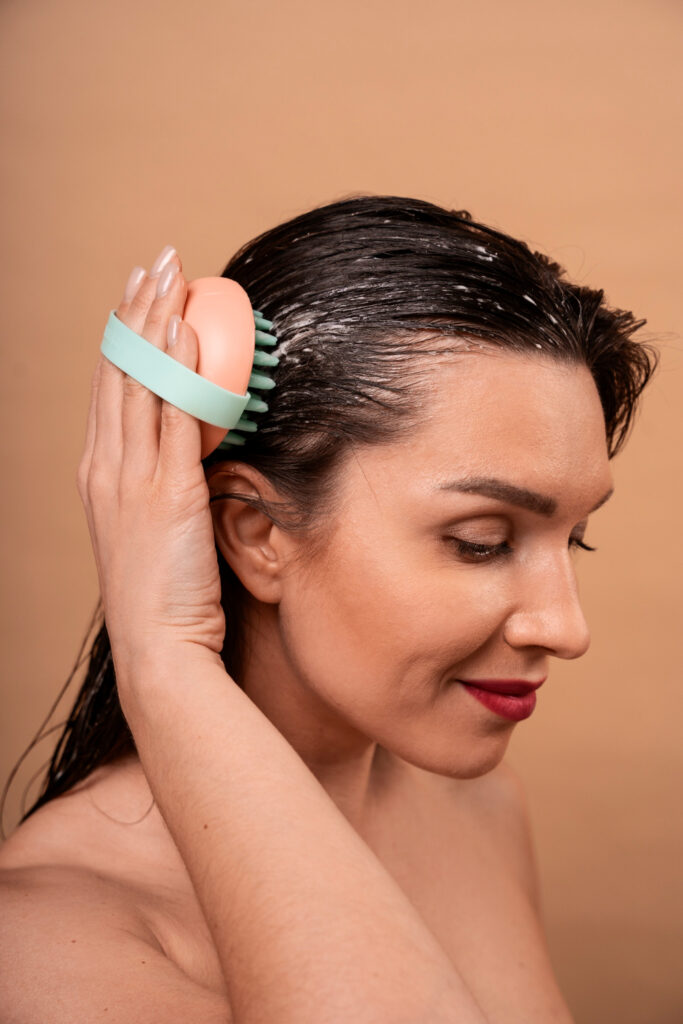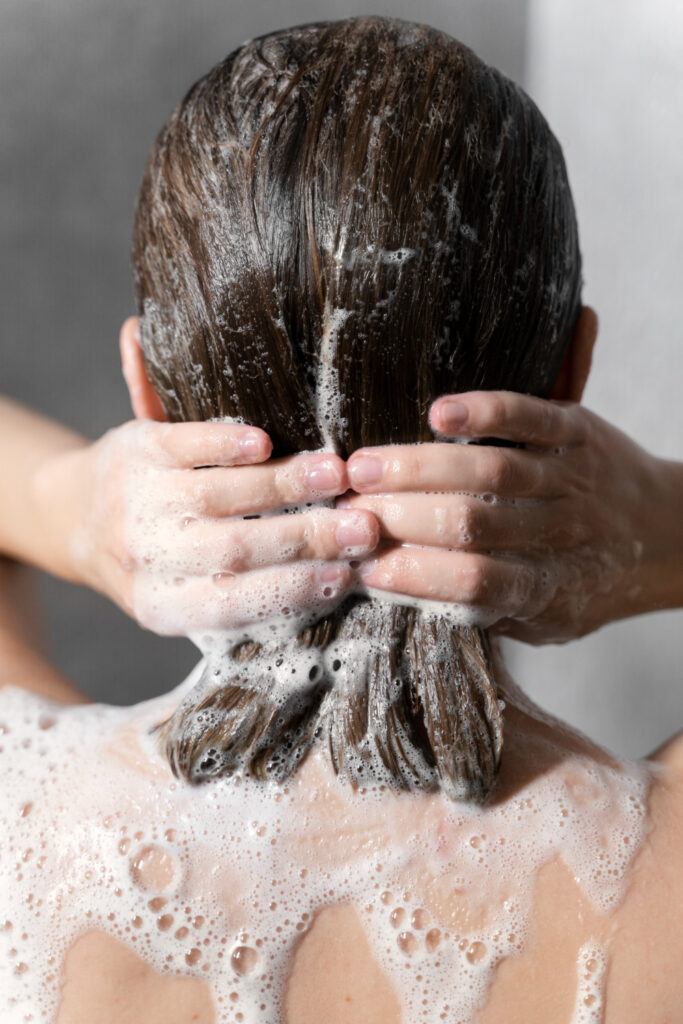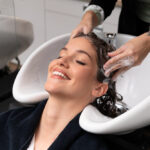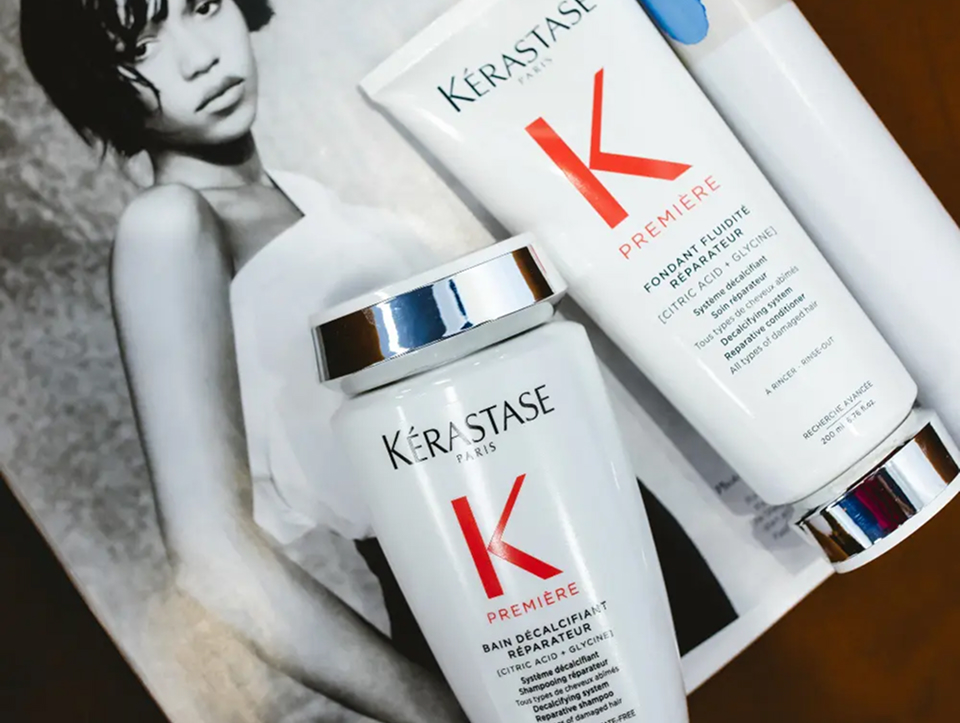Are you one of the many people who focus on hair products but neglect the scalp? Doing this can lead to buildup, itchiness, dandruff, and slow hair growth.
At Haste Hair, our scalp specialists have treated countless clients, ensuring healthier, balanced scalps. We’ll show you how to exfoliate your scalp properly, both at home and professionally, including the benefits, techniques, and tips backed by research.
By the end, you’ll have a clear routine to remove buildup, stimulate hair follicles, and maintain a healthy scalp for stronger, shinier hair.
Step-by-Step Guide: How to Exfoliate Your Scalp

1. Physical Exfoliation

Gently massage your scalp using fingertips, scalp brushes, or exfoliating gloves in small circular motions. This helps remove dead skin cells and stimulates blood flow.
💡 Tips & Recommendations:
- Do this for 2–3 minutes, 1–2 times per month. ⏱
- Avoid scratching; gentle pressure prevents irritation.
- Perfect for dry or flaky scalps.
2. Chemical Exfoliation

Professional treatments to exfoliate your scalp use mild acids like salicylic acid or AHAs to dissolve dead skin and unclog follicles.
💡 Tips & Recommendations:
- Only trained professionals should perform chemical exfoliation.
- Helps with persistent dandruff or oily scalp.
- Combine with a soothing mask to reduce irritation.
👉 Visit us for a professional scalp exfoliation and scalp chemical exfoliant treatment.
3. Scalp Scrubs
Exfoliating scrubs with natural particles can remove buildup gently at home. Massage in small circles and rinse thoroughly.
💡 Tips & Recommendations:
- Use DIY scrubs like sugar + honey or apple cider vinegar to maintain scalp health.
- Focus on the scalp, not hair shafts.
- Limit to once every 2–3 weeks to avoid over-exfoliation.
👉 Check out these notable scalp exfoliating products.
4. Scalp Exfoliating Shampoo
Look for shampoos containing charcoal, tea tree oil, or salicylic acid to exfoliate your scalp. Apply to scalp, massage gently, and rinse.
💡 Tips & Recommendations:
- Target areas prone to flakes or oil buildup.
- Follow with a lightweight conditioner to maintain moisture.
- Rotate with regular shampoos to prevent dryness.
✍️ Learn how to do hair damage repair all year round
5. Scalp Massage

After exfoliation, massage your scalp for 5–10 minutes to boost circulation and oxygen delivery to hair follicles.
💡 Tips & Recommendations:
- Use fingertips or a soft scalp massager.
- Combine with oils like jojoba or argan for hydration.
- Perfect way to relax and reduce stress
Professional vs At-Home Exfoliation
| Feature | At-Home Exfoliation 🏡 | Professional Exfoliation 🏥 |
|---|---|---|
| Method | Gentle scrubs, fingertips, scalp brushes, exfoliating shampoos | Deep cleaning, chemical exfoliants (like AHAs or salicylic acid), and tailored scalp therapy |
| Frequency | 1–2 times per month, depending on scalp type | Usually 1 session per month or as recommended by a specialist |
| Intensity | Mild; prevents over-exfoliation or irritation | Stronger; targets stubborn buildup, excessive oil, or dandruff |
| Scalp Assessment | Self-assessment or basic observation | Professional scalp analysis to diagnose conditions like inflammation, sensitivity, or flakiness |
| Benefits | Maintains scalp health, prevents buildup, and promotes blood circulation | Deep cleansing addresses chronic scalp issues, improves hair growth, and supports long-term scalp health |
| Safety | Safe for most hair types; avoid over-scrubbing | Safe when performed by trained professionals; ideal for sensitive or problematic scalps |
| Products Needed | DIY scrubs, exfoliating shampoos, brushes | Professional-grade products, scalp masks, serums, and chemical exfoliants |
| Tip | Start at home to learn your scalp’s needs and avoid over-exfoliation | Complement at-home routine with professional sessions for maximum results |
🌿 Extra Tip: Combining both approaches works best. Use gentle at-home exfoliation to maintain scalp health, and schedule professional sessions to tackle deeper buildup or chronic scalp concerns.
Tips to Maximize Your Scalp Exfoliation Routine
- Start gently and avoid over-exfoliating.
- Exfoliate 1–2 times per month, depending on scalp type.
- Combine exfoliation with scalp hydration.
- Use tools or shampoos recommended by professionals.
- Track your scalp’s reaction; redness or sensitivity means reduce frequency.
🌿 Learn more in our 7-Day Scalp Detox Routine article.
Side Effects & Risks of Scalp Exfoliation

While exfoliating your scalp has many benefits, it’s essential to do it correctly to avoid irritation or damage. Here’s what you need to know:
Common Side Effects:
- Redness or tenderness – often caused by over-scrubbing or excessive chemical exfoliants
- Dryness or flaking – from over-exfoliation or harsh products
- Allergic reactions – particularly with chemical exfoliants or essential oils
Who Should Be Cautious:
- People with eczema, psoriasis, or acne on the scalp
- Individuals with extremely sensitive skin
- Those using strong chemical treatments at home
Tips to Minimize Risks When You Exfoliate Your Scalp:
- Start slow and gentle – test once every 2–3 weeks
- Use products recommended for your scalp type
- Avoid harsh scrubs or acids if your scalp is irritated or inflamed
- If in doubt, book a professional scalp exfoliation
🌿 Tip: A balanced approach alternating at-home gentle exfoliation with professional treatments maximizes benefits while minimizing risks.
Refresh & Revitalize Your Scalp Today
Exfoliating your scalp is a game-changer for both hair and scalp health. Regular exfoliation helps remove buildup, stimulate hair follicles, and leave your scalp feeling refreshed and balanced. In turn, it prevents common scalp conditions like dandruff and other similar issues.
Whether you prefer at-home maintenance or professional scalp therapy, your scalp will thank you with healthier, shinier hair.
✨ Ready to experience a revitalized scalp? Book your professional scalp exfoliation today and discover personalized solutions with our scalp therapy service. Your hair and scalp deserve it.
FAQ
What is a scalp exfoliation?
A scalp exfoliation is a treatment that removes dead skin cells and debris using physical or chemical exfoliants.
How do I exfoliate my scalp at home?
To remove dead skin cells at home, consider using a DIY scalp scrub, shampoo, or an exfoliating scalp brush. Alternatively, you can use a leave-in scalp treatment.
Can scalp exfoliation improve hair growth?
Once every 2–3 weeks for most people. Adjust based on scalp type and sensitivity.
Can scalp exfoliation improve hair growth?
Yes. By unclogging follicles and boosting circulation, exfoliation supports healthy hair growth.
Is professional scalp exfoliation safe?
Indeed, when performed by trained specialists like our professionals at our hair spa in Boston.









